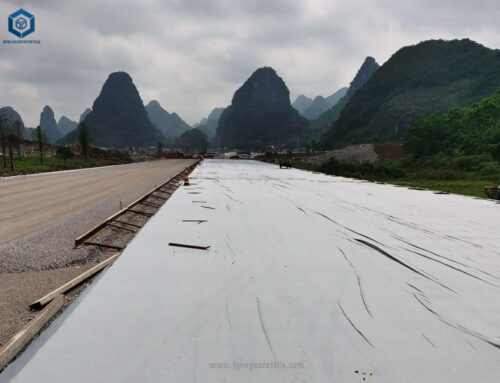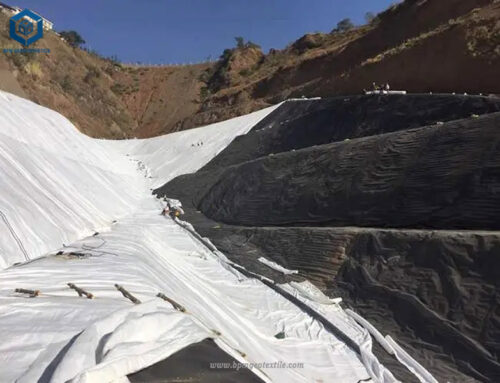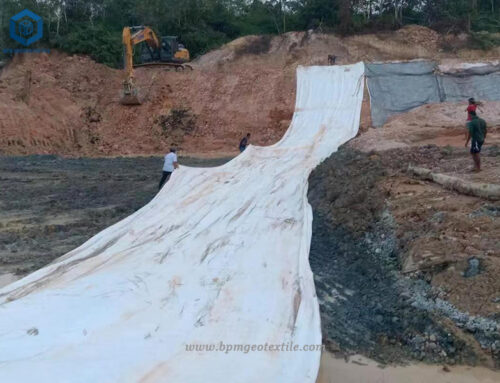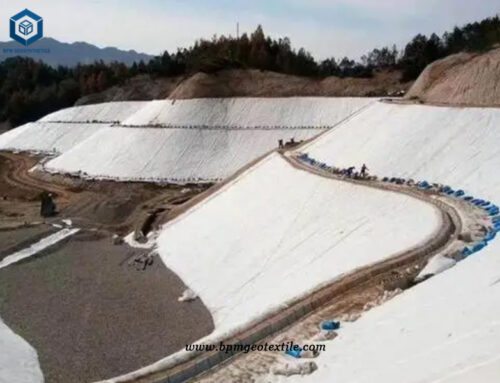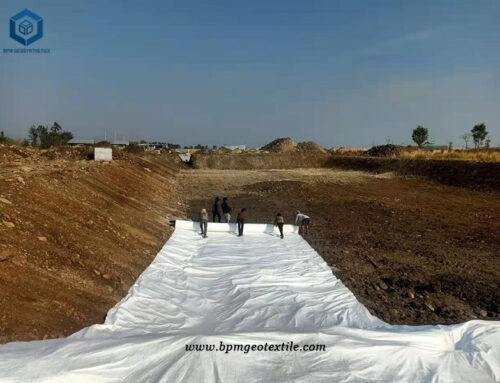Geotech landscape fabric, also known as geotextile fabric, is a kind of non-woven and industrial fabrics. The staple fiber needle-punched geotextile uses polyester crimped staple fiber with a denier of 6-12 denier and a length of 54-64mm as raw materials. Through the process of opening, carding, messy (short fibers intertwined), laying (standardized entanglement and fixation), needle punching and other production processes of non-woven production equipment, it is made into geotech landscape fabric.
Non Woven Geotextile Features
- The non woven geotextile utilizes the good air permeability and water permeability to allow water to pass through, thereby effectively intercepting sand and soil loss;
- Geotextile fabric has good water conductivity, it can form a drainage channel inside the soil, and drain the excess liquid and gas from the soil structure;
- Geotextile fabric can enhance the tensile strength and deformation resistance of the soil, enhance the stability of the building structure, and improve the quality of the soil;
- The geotextile fabric can effectively diffuse, transfer or decompose the concentrated stress to prevent the soil from being damaged by external forces;
- The non woven geotech landscape fabric can prevent mixing between the upper and lower layers of sand, soil and concrete;
- Due to the strain and mobility of the network structure formed by the indeterminate fibrous tissue, the holes are not easy to be blocked;
- With high water permeability, it can still maintain good water permeability under the pressure of soil and water;
- Using polypropylene or polyester and other chemical fibers as raw materials, it is acid and alkali resistant, non-corrosive, non-worm-eaten, and anti-oxidation.
- Complete specifications: width up to 6 meters. It is currently the widest product in China, with a mass per unit area: 100-600g/㎡;
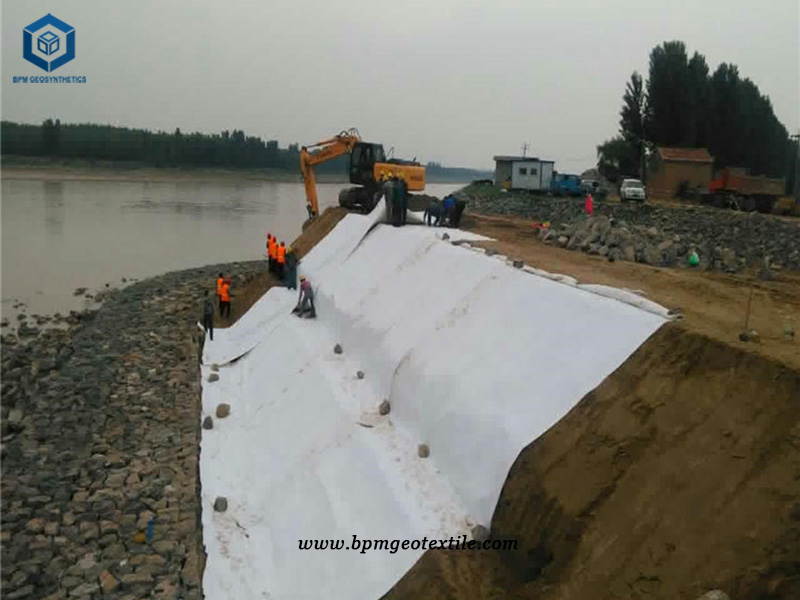
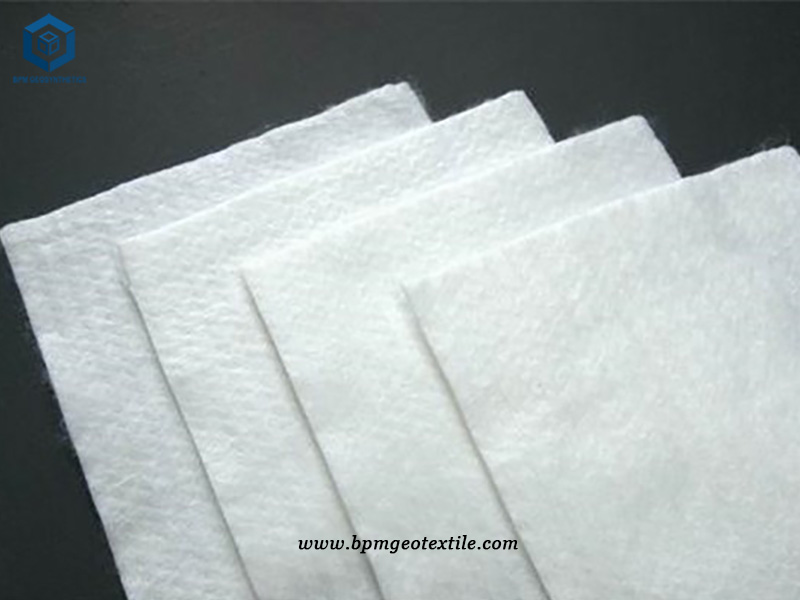
However, carded webs made for needle-punching are well known for their nonuniformity, and the barbed needles used in needle-punching process inevitably and undesirably create perforations in the fibrous structure. This appears on the fabric surface as visible needle marking, which is a series of punch hole locations that may be joined by reoriented fibers in the fabric plane running in the machine direction. These needling holes could compromise the integrity of the filter and inhibit efficient filtration, detrimental to the strength of the resultant fabric. Therefore, nonwoven fabric filters usually have a higher basis weight and fabric volumetric density in order to exhibit sufficient strength and uniformity for filtration applications, and frequently need glaze singeing, calendering, and coating to enhance filtration efficiency.
Application
Short fiber geotech landscape fabric, is usually not used alone, and often applied in the dyke slope, lining bottom that are covered under the block of stone or concrete precast slab. Thereby, a stable protective body is formed. In the vertical seepage control project, short fiber geotextile is also ultimate buried in soil in sunless, and has multiple functions, such as, filtration, drainage, isolation, seepage control and protection. Short fiber geotextile is usually used together with geomembrane, as geotechnical cloth in the construction of railway, highway, sports hall, dam, water construction and tunnel, etc.
The basic requirements of non woven geotextile laying
- The joints must be intersected with the slope line; where they are balanced with the toe of the slope or where stress may exist, the interval between the joints must be greater than 1.5m.
- On the slope surface, anchor one end of the geotextile, and then put down the coiled material on the slope surface to ensure the tightness of the geotextile connection.
- All geotextile fabric must be pressed with sand bags. The sand bags will be used during the laying period and kept until the layer of material on top of the laying.
Precautions for Geotextile Installation
Geotextile fabric can only be cut with a geotextile knife (hook knife). If it is cut in the garden, special protective measures must be taken for other materials to prevent it from being caused by cutting the geotextile. Unnecessary damage; while laying the geotextile, all necessary measures must be taken to prevent crushing of the underlying material; when laying the geotextile, care must be taken not to allow stones, a large amount of dust or moisture, etc., to crush the geotextile,
Substances that may obstruct the drainage canal or overflow the net, or may bring hardship to the next connection are buried under the work cloth or geotextile in the grave; after the installation is completed, visually inspect the appearance of all the geotextiles to determine all damaged Place signs and repairs to make sure that there is no foreign material that can cause damage to the paved surface, such as broken needles and other foreign objects.
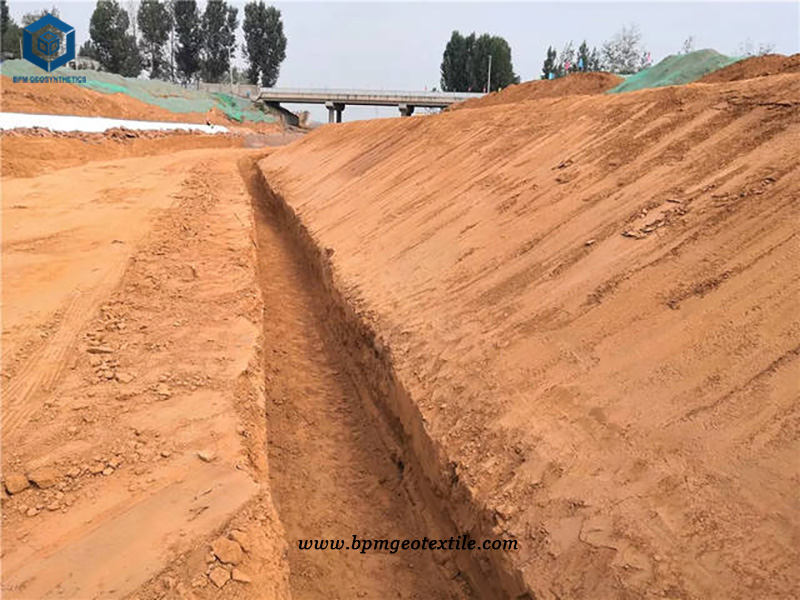
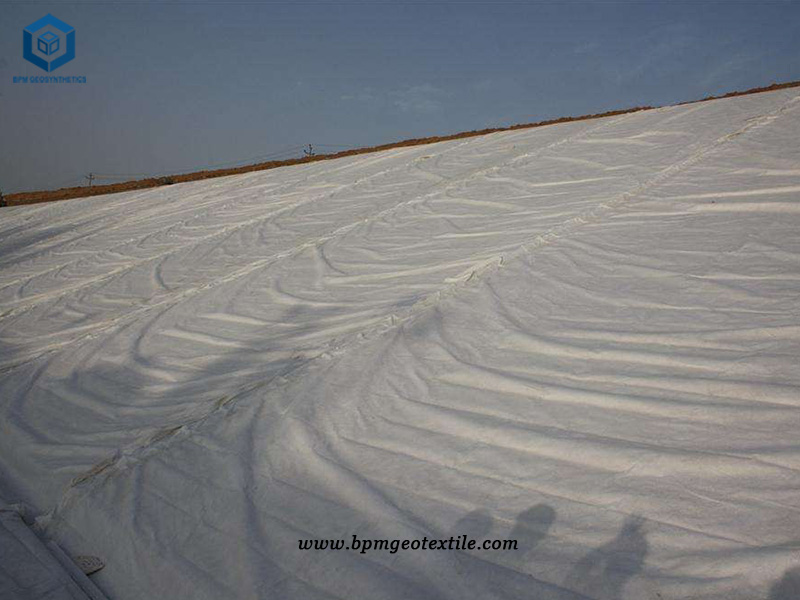
CASE STUDY
Thailand is located in the tropics, with a hot climate and a lot of precipitation, especially in summer, which leads to soil erosion and soil erosion. In order to better preserve the soil and protect the environment, the Thai government has decided to conserve soil and water in areas that are prone to soil erosion. Our Thai client took this project into his arms. Customers learned that we have produced staple fiber needle-punched geotech landscape fabric, on our website for more than ten years, so they asked us for a price of 10 square meters of staple fiber needle-punched geotextiles. We understood the customer’s needs and recommended 400g PP staple fiber needle-punched geotextile to the customer. We sent the quotation of staple fiber needle-punched geotextile to the customer, as well as the index. Since we are a manufacturer and have certain advantages in price, customers are very satisfied with our price and can ask for some samples to be tested in the laboratory. We have prepared 1*1m samples for customers. When the customer received the samples, he felt that the product quality was very good, and the test results also met the standards they needed. The customer was very satisfied and gave this order to us. Due to the urgent engineering cycle of the customer, we completed the order within 10 days and arranged for delivery. Due to our professionalism, rapid response, and high-quality service, customers have a great affection for our company. In the following time, customers will hand over orders to us whenever they have projects, and we Low-priced, high-quality products have also won a good reputation for customers in the local area, and both of us have produced a win-win situation.
Specification of Non Woven Geotech Landscape Fabric for Soil and Water Conservation in Thailand
- Total quantity – 100,000 squares meters
- Geotextile weight – 400gsm
- Each roll size is 5.9m*100m
About BPM
BPM manufactures and wholesales many types of effective and states of the art geotextile, geomembrane, and other geosynthetics to over 36 countries. BPM geosynthetic products are widely used across a variety of industries including waste containment, water containment, aquaculture, industrial project, energy project and mining projects, etc. BPM main customers are from Australia, France, Sweden, UK, Hungary, New Zealand, Poland, Mexico, Ecuador, Brazil, Pakistan, Bangladesh, Thailand, Vietnam, Malaysia, Indonesia, Singapore, Philippines, Sri Lanka, India, UAE, Saudi Arabia, Qatar, Kenya, etc.
BPM is not only manufacturing best quality geosynthetic products but also providing professional design and installation service. OEM, ODM, custom development and fabrication are also available. If you have any questions or inquiries, please fill and submit the following form, we will reply as soon as possible.

